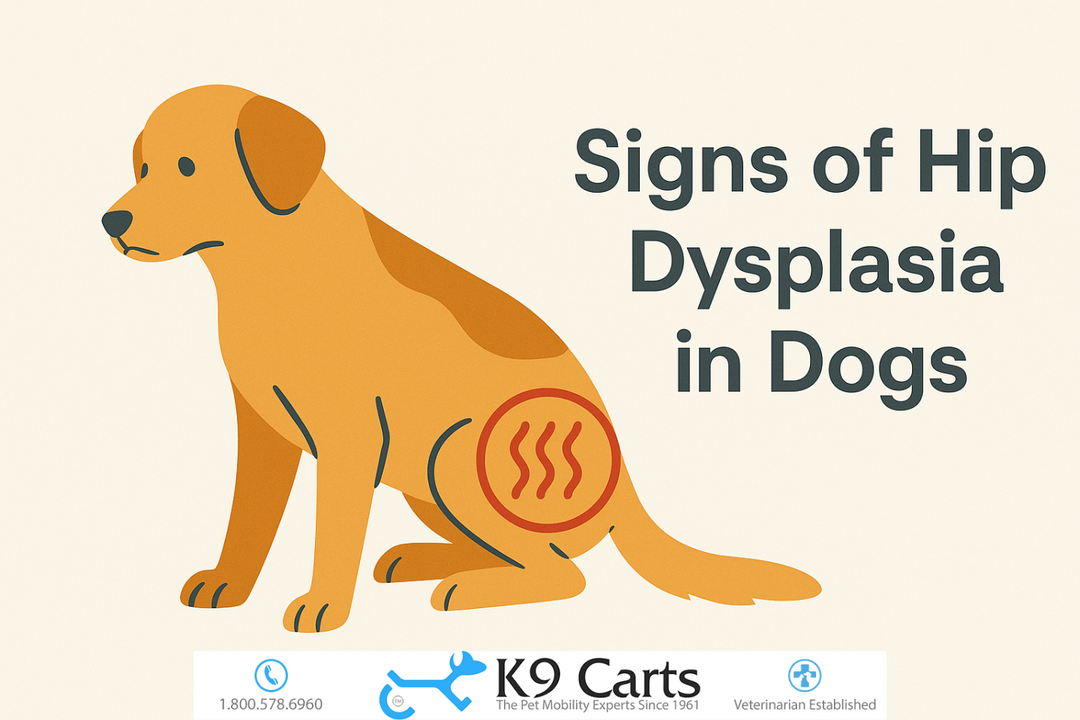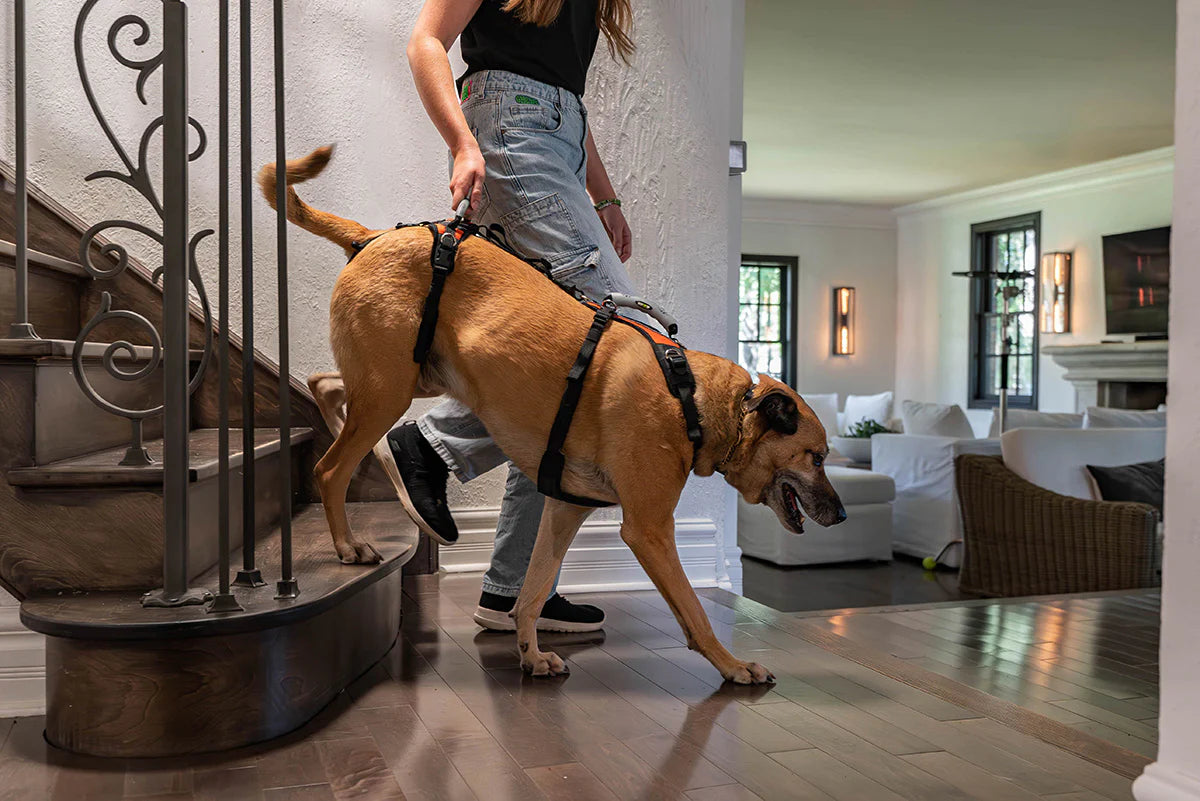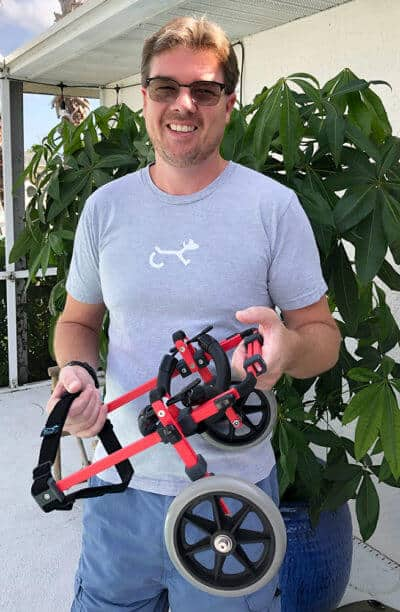What Are the First Signs of Hip Dysplasia in Dogs? 7 Early Symptoms to Know

Hip dysplasia is one of the most common orthopedic conditions in dogs, especially in large breeds. Early signs can be subtle, which is why many owners miss them until the problem grows worse. Spotting early symptoms can help your dog live with less pain and move more freely for longer.
On this page, we will cover the first seven signs you should watch for, why they happen, how to spot them, and what you can do to help your dog live well.
What is hip dysplasia in dogs?
Hip dysplasia happens when a dog’s hip joint does not grow the right way. The hip joint is a ball and socket that should fit snugly. When it doesn’t, the joint rubs and slips, which leads to pain, wear, and arthritis. Many dogs are born with a risk for hip dysplasia because of their genes, but it can get worse because of fast growth, weight, or too much exercise while growing.
How can I tell if my dog has hip dysplasia early?
Dogs try to hide pain at first. Knowing what to look for helps you act early. Here are seven signs that can point to early hip dysplasia.
1. Does your dog have trouble standing up?
One of the first signs is trouble rising from lying down. If you see your dog push with its front legs more than its back legs, or if it struggles to stand after rest, this may be a sign the hips hurt or feel weak. Puppies with hip dysplasia may seem stiff or slow to get up, which is easy to overlook.
2. Is your dog’s back end swaying when walking?
Many owners notice that their dog’s hips sway more when they walk. This “bunny hop” gait, where the dog uses both back legs together instead of one at a time, can mean the hips feel loose or painful. Watch your dog from behind while walking slowly. If you see more swaying or hopping, it’s worth a check-up.
3. Does your dog avoid stairs or jumping?
A dog with sore hips will often stop doing things that need strong hips. Your dog may avoid climbing stairs, jumping into the car, or hopping on the couch. They may stand at the bottom of stairs and bark for help. This is not just aging — it could be hip pain.
4. Do you feel a click or pop in the hips?
Some owners feel or hear a soft click in the hip area when they pet their dog or when the dog moves. This can be the hip slipping out of place a bit. Not all dogs with hip dysplasia have this, but if you feel it, talk to your vet.
5. Is your dog’s back leg muscle shrinking?
When hips hurt, dogs shift weight to the front legs. Over time, the back legs lose muscle. If you run your hands along your dog’s back legs and one or both feel thinner than before, this can be a red flag. Muscle loss in the back legs is one of the clearer signs.
6. Does your dog show signs of pain?
A dog may lick or chew at the hip area or seem sensitive when you touch their hips. They may whine, avoid play, or move less. Some dogs may show pain after running or playing hard, then limp for a few hours or a day. If you notice this again and again, hip dysplasia could be the reason.
7. Does your dog tire out faster?
Dogs with sore hips often rest more and play less. If your once-active dog now lies down often during a walk or wants to turn back home sooner, watch for other signs. Early tiredness can mean sore or unstable hips.
What breeds are most at risk for hip dysplasia?
Large breeds like German Shepherds, Labradors, Golden Retrievers, and Rottweilers often have hip dysplasia. Some smaller breeds can have it too, like Bulldogs and Pugs. Mixed breeds can get it if they have large breed genes. If you have a breed at risk, talk to your vet about checks during puppy growth.
How do vets check for hip dysplasia?
Your vet will watch how your dog stands and moves. They may move the hips to feel for looseness or pain. X-rays are the main tool to see the shape of the hip joint. The vet may also test how loose the joint feels with a simple exam.
How is hip dysplasia managed in dogs?
Most mild to moderate cases can be managed without surgery. Vets may suggest weight control, joint-friendly food, gentle exercise, and pain medicine. Physical therapy helps build muscle to support the hips. Swimming is great because it works the legs without stress on the joints.
In more severe cases, surgery might help. There are different surgeries depending on age and joint damage. Your vet can guide you on the best path.
How can a dog wheelchair help dogs with hip dysplasia?
As hip dysplasia worsens, dogs may lose strength in the back legs. A custom dog wheelchair, like those made by K9 Carts, can help take weight off the hips and give support for walking. This lets your dog stay active and build muscle without extra pain.
K9 Carts makes wheelchairs that fit your dog’s shape, which helps your dog feel safe and comfortable. Many dogs adjust to a wheelchair fast and feel happier because they can move freely again.
What else can I do at home to help my dog?
You can help your dog by keeping their weight healthy. Use ramps instead of stairs where possible. Soft bedding and non-slip rugs help your dog move safely. Gentle walks and swimming help keep the joints moving. Talk to your vet about joint supplements that may help protect the cartilage.
Helping your dog live well with hip dysplasia
Catching hip dysplasia early can help your dog stay active and happy. Watch for the signs and talk to your vet if you notice any changes. Good care, gentle exercise, and tools like a custom K9 Carts dog wheelchair can help your dog enjoy life even if their hips are not perfect. Many dogs with hip dysplasia live long, full lives when they have the right support.








